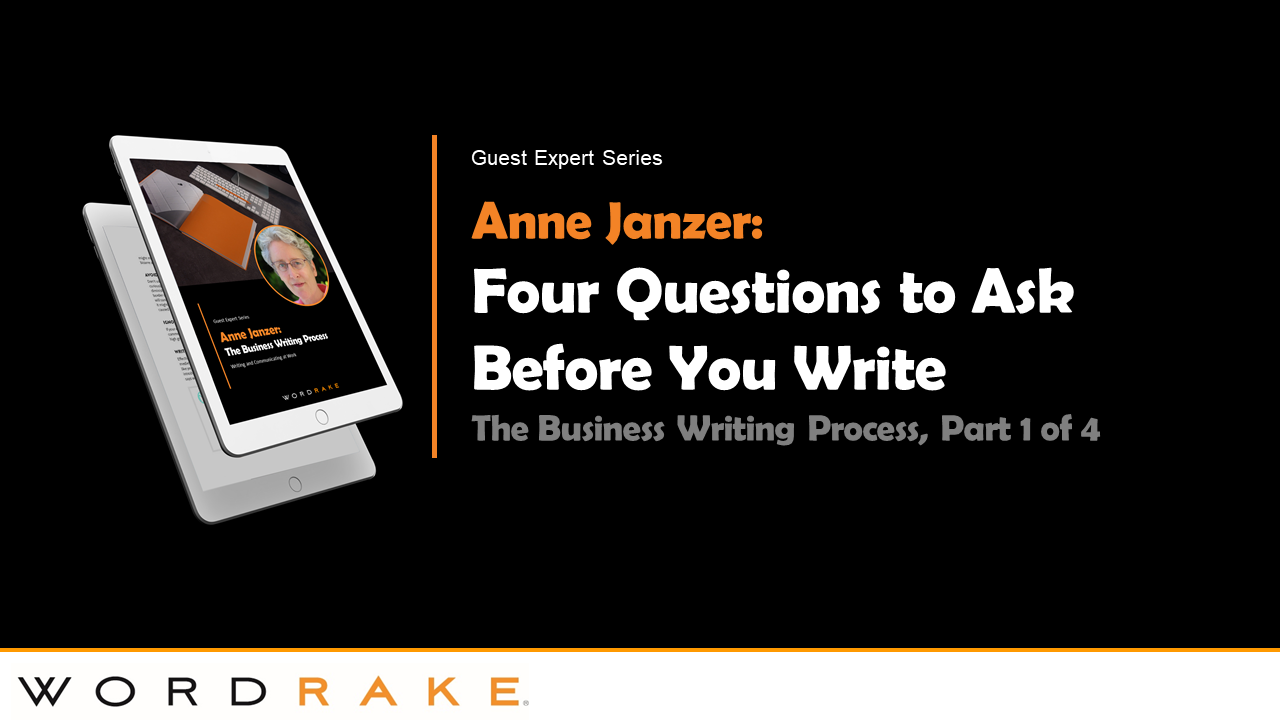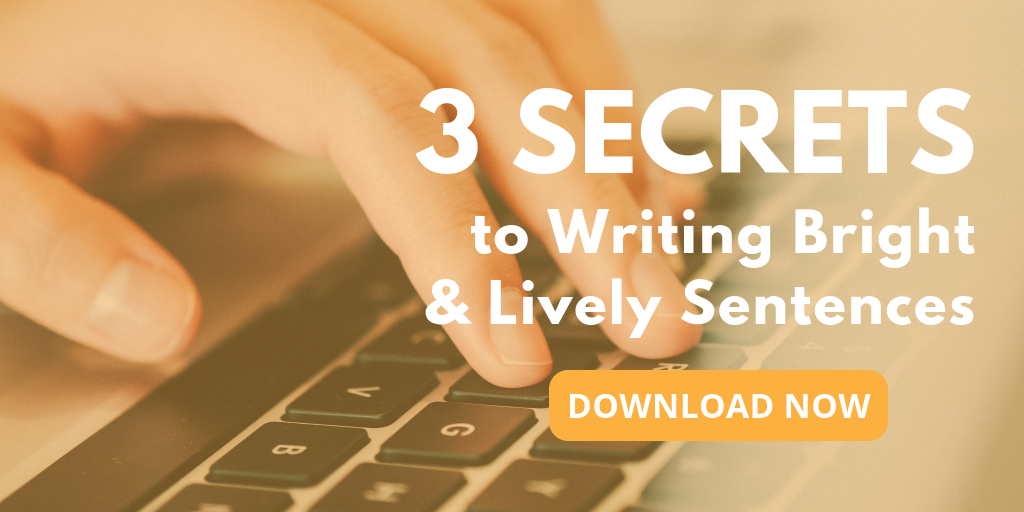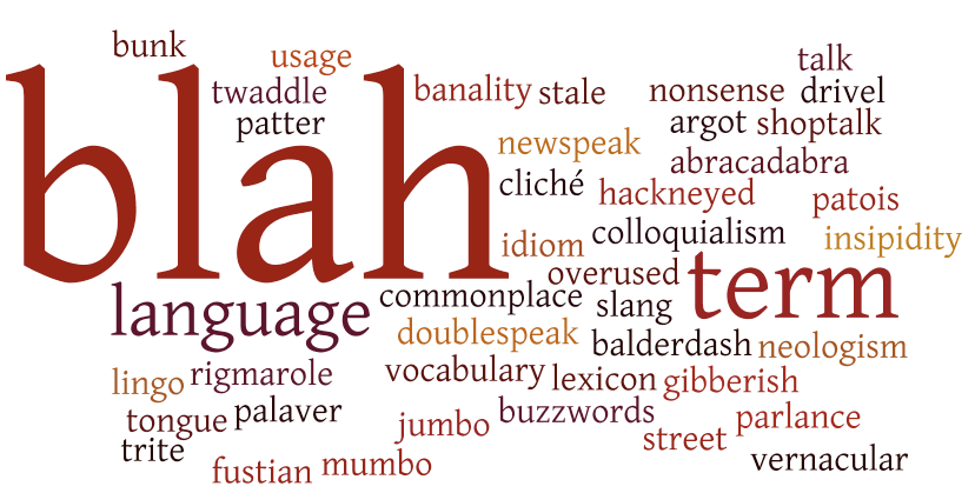Successful professional writing starts with clear thinking.
In the rush of deadlines and projects, it’s tempting to jump right in and knock something out. Faster is better, right? Instead, take a moment to set a course before you write.
This post offers a simple, four-question checklist to complete for every work-related project, whether a social media post, a legal brief, or an email to a client. Make it part of your writing process and you’ll find it makes the whole process faster, easier, and more successful.
Here’s the checklist: four questions about objectives, your audience, and potential barriers to success:
- Who’s the reader?
- Why are you writing this?
- Why will they read this?
- Who are the other stakeholders (if any)?
Have you ever written a brief or report that gets caught in endless revisions and approvals? This four-question checklist can protect you from that situation (see Question #4). When you’re communicating as part of a team or on behalf of an organization, investing a few minutes in these questions can save untold time and debate later.
(Personal writing also benefits from this planning. Even Aunt Ethel might appreciate the clarity if you take a moment to reflect before writing her an email)
Let’s dig into those four questions in more detail.
The Reader
Who will read this piece? Without understanding the audience, you cannot control how the piece will land.
Identify the ideal readers at a high level, such as customers, corporate prospects, or investors. Picture a single individual you know in the role: the customer you spoke with last week or your accountant neighbor. This makes it easier to enlist a human, conversational writing style.
If you have multiple audiences, pick one primary group. Others will read the work, but a narrower focus will make it more effective.
Perhaps you know exactly who the readers will be. That’s great. Highly tailored content can have an outsized impact. Examples of small-audience, high-impact writing include the following:
- A technical paper written to convince a single, critical prospect for a startup
- A career-critical project proposal for the management team
- A grant application
Your Objective
It sounds obvious, but why are you writing this thing? (You would be surprised how often this question can stump people hiring writers.)
You cannot determine the success of your efforts without a goal.
Most written pieces have more than one objective. Actors speaking lines know the subtext that informs their delivery. You should, too.
For example:
- An email to a prospect may have the explicit objective of answering a question or handling an objection, with the subtext of earning trust and demonstrating expertise.
- A LinkedIn post might share some new data you’ve found with peers, with the subtext of positioning yourself as an industry expert.
Note: Keep your objectives focused on one audience. If you try to sell to a customer while impressing your manager, you’re likely to fail on both counts. Let the results of your work impress your management.
The Reader’s Reasons for Reading
Why will someone read this thing? How will they find it, and why will they invest their attention in it?
Too many writers ignore this question. Remember, the reader determines whether the piece works.
Even if readers must engage with your content for their jobs, you should not count on their undivided attention. Why will they spend their overtaxed mental resources on your content?
Examples of readers’ reasons:
- They’re curious about you or the topic
- They have a problem and found this while searching for a solution
- Reading this piece is part of their job description
- They need this content to achieve an important goal
These are high-level examples: be specific. The grant organization may have money they want to distribute in alignment with their organizational goals. Your management team may be interested in reducing costs.
This question has a corollary: What mood will they be in when they read it? Distracted? Happy? Curious? Upset?
Answering this question exercises your cognitive empathy (perspective taking). Empathy makes us better, more effective writers. (It makes us better coworkers, parents, lawyers, and human beings as well.)
The Stakeholders
Writing builds a communication bridge between you and your readers. But when you write professionally, other people contribute to that bridge—providing content, approving it, publishing and promoting it, and more.
If you don’t plan for the stakeholders, your project may never reach the readers.
Content stakeholders include anyone involved in the project or aligned with its objectives: your colleagues, your management, and people in other departments.
Who has information you need?
Who will want to provide input on this piece?
Who has final approval authority?
Make a list of these people. Keep it handy as you write, revise, and publish.
Warning: Don’t conflate stakeholders with audience. We often try to impress our colleagues as we write for an external audience. When that happens, we unconsciously unleash insider language, or jargon. This inevitably backfires, as it leaves the readers in the dark.
What to Do with the Answers
Your answers to those four questions will guide your research and writing. They will help you avoid potential pitfalls. Here’s how to use them:
Use the answers to envision the result
With your audience and their needs in mind, make initial decisions about length, format, style, and more.
Share the questions with stakeholders or your team
Have you heard of the illusion of agreement? It’s what happens when a group of people assume that they agree on something. It’s more common than we like to think.
Put together a quick email or document describing the project and including your answers to these four questions. Then, share it with the stakeholders. This ensures that everyone has the same overall vision for the piece, shattering any illusion of agreement.
Others might disagree about the audience or the objective. Welcome that disagreement now, before you write, rather than after you’ve spent time polishing something wonderful. That brings us to the next tip.
Put boundaries around potential conflict
If you sense potential conflict later, get an explicit go-ahead from the stakeholders before you write.
Describe your vision for the piece based on these four questions. If you’re ready to do so, create an outline and add it to this description. Then circulate it to the key stakeholders ahead of time and ask for approval on your approach before you write. This will save grief during reviews and approvals.
You may still get pushback later. But if someone has signed off on the plan, all they can argue about is how you have executed the plan, not whether it was the right plan.
Improve Your Business Writing Process
This simple checklist is the foundation of a strong, repeatable writing process. Try it.
Future posts in this series will offer other processes improvements for generating ideas, streamlining the writing itself, and getting your written work out into the world. But it all begins with the initial act of gathering your thoughts and assessing your strategy.
About Anne Janzer
Anne Janzer is an enthusiastic WordRake user, an award-winning author, armchair cognitive science geek, nonfiction author coach, marketing practitioner, and blogger. She’s on a mission to help people spread important ideas through writing. As a professional writer, she has worked with more than one hundred technology companies, writing in the voice of countless brands and corporate executives. Her books include 33 Ways Not to Screw Up Your Business Emails, Writing to Be Understood, and Subscription Marketing. They have been published in Japanese, Korean, and Russian and are used in college writing courses. Find her blogs and review of WordRake on AnneJanzer.com.
Series on the Business Writing Process
This is part 1 of the four-part series The Business Writing Process by award-winning author Anne Janzer. Readers prefer to read what is easy to understand; make it easy for them by weeding out anything that requires extra mental work, like long, confusing sentences or too many extra words! Use WordRake to uncover the meaning in your writing—rake away unnecessary words, leaving behind easy-to-understand ideas that will impress your readers. WordRake editing software is available for Microsoft Word and Outlook on Windows or for Microsoft Word only on Mac. You can try it free for 7 days.








